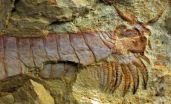(Press-News.org) It's a basic, reasonable question: How much will this cost me? For patients in the emergency room, the answer all too often is a mystery.
Emergency departments play a critical role in health care, yet consumers typically know little about how medical charges are determined and often underestimate their financial responsibility -- then are shocked when the hospital bill arrives.
A new study led by UC San Francisco highlights the problem by identifying giant price swings in patient charges for the 10 most common outpatient conditions in emergency rooms across the country.
Out-of-pocket patient charges ranged from $4 to $24,110 for sprains and strains; from $15 to $17,797 for headache treatment; from $128 to $39,408 for kidney stone treatment; from $29 to $29,551 for intestinal infections; and from $50 to $73,002 for urinary tract infections.
The study, representing an estimated 76 million emergency department visits between 2006 and 2008, is the first to demonstrate a large, nationwide variability in charges for common emergency department outpatient conditions, according to the researchers. The analysis uses data from the 2006-2008 Medical Expenditures Panel Survey from the Agency for Healthcare Research and Quality.
The study will be published online Feb. 27, 2013 in PLOS ONE.
Amid escalating health care costs and a growing burden of medical debt among many Americans, cost controls and transparency in the nation's emergency rooms are increasingly important, the authors said, particularly for medical conditions that are less time-sensitive.
"Our study shows unpredictable and wide differences in health care costs for patients,'' said senior author Renee Y. Hsia, MD, an assistant professor emergency medicine at UCSF. She is also an attending physician in the emergency department at San Francisco General Hospital & Trauma Center.
"Patients actually have very little knowledge about the costs of their health care, including emergency visits that may or may not be partially covered by insurance,'' she said. "Much of this information is far too difficult to obtain.''
The cost of health care has increasingly been at the forefront of economic, political and medical debate. But especially when it comes to emergency rooms (ERs), visited by an estimated one in five Americans annually, patients as well as their physicians are often in the dark about billable charges.
For consumers with health insurance, escalating ER charges are resulting in larger deductibles and co-payments. And for the ranks of uninsured patients, who disproportionately rely on the emergency department for non-emergency care, higher ER charges result in a larger proportion of self-pay responsibility.
The study focused on adults 18 to 64 years old, the demographic at the highest risk of facing the largest out-of-pocket charges. It excluded people 65 or older because most such patients are covered by Medicare. And it excluded visits resulting in hospital admission.
Altogether, the researchers looked at the total charges – medical care, tests and treatment – for 8,303 patients, nearly half of them privately insured. The charges do not represent the amount patients or insurers reimburse providers, but rather the total charge that patients or their insurance providers are billed. Because of the complex survey design, the number of patients analyzed in the sample was weighted to provide the total estimated number of ER visits during the study timeframe.
The most common outpatient conditions were sprains and strains, "other injuries,'' and "open wounds of extremities.'' Many patients suffered from hypertension, asthma or high cholesterol.
Among key findings:
The median charge for total outpatient conditions was $1,233.
Upper respiratory infections had the lowest median charge: $740.
A kidney stone condition had the highest median price: $3437.
Uninsured patients were charged the lowest median price ($1,178) followed by those with private insurance ($1,245) and Medicaid ($1,305).
"While most patients with time-sensitive conditions such as acute myocardial infarction, stroke, or sepsis may not be in a position to make decisions about their care based on costs or charges, there are many situations in which patients could reasonably inquire about the potential financial implications of their medical care before making treatment decisions,'' the authors wrote.
While the study was not designed to evaluate specific reasons behind the cost variations, the authors noted previous research attributing cost differences to factors such as geographic location and provider reimbursement variations.
More transparency in hospital charges is needed, the authors said, and consumers should be better informed about the costs of their medical care.
###Co-authors are Nolan Caldwell, MD of Stanford University; Tanja Srebotnjak, Phd, of the Ecologic Institute in San Mateo; and Tiffany Wang, BA, of the University of Minnesota Medical School.
Support for the study was provided by the Robert Wood Johnson Foundation, the National Center for Advancing Translational Sciences, National Institutes of Health (UCSF-CTSI Grant Number KL2TR000143), and the UCSF Center for Healthcare Value.
UCSF is a leading university dedicated to promoting health worldwide through advanced biomedical research, graduate-level education in the life sciences and health professions, and excellence in patient care.
Follow UCSF
UCSF.edu | Facebook.com/ucsf | Twitter.com/ucsf | YouTube.com/ucsf
How much will I be charged?
UCSF study examines patient bills for top 10 visits to the emergency room
2013-02-28
ELSE PRESS RELEASES FROM THIS DATE:
How much protection is enough?
2013-02-28
Protection of marine areas from fishing increases density and biomass of fish and invertebrates (such as lobster and scallops) finds a systematic review published in BioMed Central's open access journal Environmental Evidence. The success of a protected area was also dependent on its size and on how it was managed, however even partial protection provides significant ecological benefits.
Marine ecosystems worldwide are suffering from a loss of biodiversity due to destruction of food chains and habitats. Increasingly areas are being set aside to protect sensitive environments ...
First signs of heart disease seen in newborns of overweight/obese mums
2013-02-28
The walls of the body's major artery - the aorta - are already thickened in babies born to mums who are overweight or obese, finds a small study published online in the Fetal and Neonatal Edition of Archives of Disease of Childhood.
Importantly, this arterial thickening, which is a sign of heart disease, is independent of the child's weight at birth - a known risk factor for later heart disease and stroke.
And it may explain how overweight/obese mums could boost their children's subsequent risk of cardiovascular disease, suggest the authors, who point out that more ...
Every degree fall in winter air temperature equals 1 percent drop in ambulance response time
2013-02-28
[Ambulance call-outs and response times in Birmingham and the impact of extreme weather and climate change Online First doi 10.1136/emermed-2012-201817]
Every one degree fall in outside air temperature during the winter corresponds to a drop in ambulance response time of more than 1 per cent, reveals research published online in Emergency Medicine Journal.
Increased demand and treacherous road conditions during the winter months combine to stretch ambulance services in England, which have a target of reaching 75% of immediately life-threatening (category A) calls within ...
Discovery opens door to multipronged attack against skin common cancer, Stanford study shows
2013-02-28
STANFORD, Calif. — Hailed as a major step forward in the effort to develop targeted cancer therapies, a recently approved drug for the most common type of skin cancer has been a mixed blessing for patients. Although the initial response is usually dramatic, the tumors often recur as the cancer becomes resistant to treatment.
Now researchers at the Stanford University School of Medicine have identified a second way to block the activity of the signaling cascade, called the Hedgehog pathway, that is abnormally active in these cancers. The researchers hope the new approach ...
Feeding limbs and nervous system of one of Earth's earliest animals discovered
2013-02-28
An extraordinary find allowing scientists to see through the head of the 'fuxianhuiid' arthropod has revealed one of the earliest evolutionary examples of limbs used for feeding, along with the oldest nervous system to stretch beyond the head in fossil record.
Until now, all fossils found of this extremely early soft-bodied animal featured heads covered by a wide shell or 'carapace', obscuring underlying contents from detailed study.
But a new fossil-rich site in South China has been found to contain arthropod examples where the carapace has literally been 'flipped' over ...
What is the cost of rare diseases such as Friedreich's Ataxia?
2013-02-28
What is the cost of rare diseases such as Friedreich's Ataxia? By analyzing direct and indirect costs of care research in BioMed Central's open access journal Orphanet Journal of Rare Diseases calculated that conservatively this rare disease costs between £11,000 and £19,000 per person per year. Proper understanding resource allocation is important in minimizing the effect of Friedreich's Ataxia on people's lives while maximizing their quality of life.
Diseases are classified as 'rare' if they affect less than 1 in 2000 people. Lack of scientific knowledge means that ...
IV fluids used by NHS responsible for unnecessary deaths
2013-02-28
Starch-based intravenous (IV) fluids used by the NHS to treat seriously ill patients are causing unnecessary deaths, according to a new Cochrane systematic review by researchers at the London School of Hygiene & Tropical Medicine.
Based on data from 25 randomised control trials, the researchers concluded that starch-based colloid fluids, used to stabilise patients with low blood pressure, are not only more expensive than saline-based crystalloid fluids, but may also be causing around 250 unnecessary deaths in the UK every year.
The study included 9,147 seriously ill ...
Supermassive black hole spins super-fast
2013-02-28
Imagine a sphere more than 2 million miles across - eight times the distance from Earth to the Moon - spinning so fast that its surface is traveling at nearly the speed of light. Such an object exists: the supermassive black hole at the center of the spiral galaxy NGC 1365.
Astronomers measured its jaw-dropping spin rate using new data from the Nuclear Spectroscopic Telescope Array, or NuSTAR, and the European Space Agency's XMM-Newton X-ray satellites.
"This is the first time anyone has accurately measured the spin of a supermassive black hole," said lead author Guido ...
Silver nanoparticles may adversely affect environment
2013-02-28
DURHAM, N.C. -- In experiments mimicking a natural environment, Duke University researchers have demonstrated that the silver nanoparticles used in many consumer products can have an adverse effect on plants and microorganisms.
Fifty days after scientists applied a single low dose of silver nanoparticles, the experimental environments produced about a third less biomass in some plants and microbes.
These preliminary findings are important, the researchers said, because little is known about the environmental effects of silver nanoparticles, which are found in textiles, ...
Research explores factors that impact adolescent mental health
2013-02-28
Research indicates that half of all lifetime cases of mental illness begin by age 14, well before adulthood. Three new studies investigate the cognitive, genetic and environmental factors that may contribute to mental health disorders in adolescence. The studies are published in Psychological Science and Clinical Psychological Science, journals of the Association for Psychological Science.
Social-Information-Processing Patterns Mediate the Impact of Preventive Intervention on Adolescent Antisocial Behavior
Kenneth A. Dodge, Jennifer Godwin, and The Conduct Problems ...
LAST 30 PRESS RELEASES:
University of Oklahoma researcher awarded funding to pursue AI-powered material design
Exploring how the visual system recovers following injury
Support for parents with infants at pediatric check-ups leads to better reading and math skills in elementary school
Kids’ behavioral health is a growing share of family health costs
Day & night: Cancer disrupts the brain’s natural rhythm
COVID-19 vaccination significantly reduces risk to pregnant women and baby
The role of vaccination in maternal and perinatal outcomes associated with COVID-19 in pregnancy
Mayo Clinic smartwatch system helps parents shorten and defuse children's severe tantrums early
Behavioral health spending spikes to 40% of all children’s health expenditures, nearly doubling in a decade
Digital cognitive behavioral treatment for generalized anxiety disorder
Expenditures for pediatric behavioral health care over time and estimated family financial burden
Air conditioning in nursing homes and mortality during extreme heat
The Alps to lose a record number of glaciers in the next decade
What makes a good proton conductor?
New science reporting guide published for journalists in Bulgaria
New international study reveals major survival gaps among children with cancer
New science reporting guide published for journalists in Turkey
Scientists develop a smarter mRNA therapy that knows which cells to target
Neuroanatomy-informed brain–machine hybrid intelligence for robust acoustic target detection
Eight SwRI hydrogen projects funded by ENERGYWERX
The Lundquist Institute and its start-up company Vitalex Biosciences Announces Strategic Advancement of Second-Generation fungal Vaccine VXV-01 through Phase 1 Trials under $40 Million Competitive Con
Fine particles in pollution are associated with early signs of autoimmune disease
Review article | Towards a Global Ground-Based Earth Observatory (GGBEO): Leveraging existing systems and networks
Penn and UMich create world’s smallest programmable, autonomous robots
Cleveland researchers launch first major study to address ‘hidden performance killer’ in athletes
To connect across politics, try saying what you oppose
Modulating key interaction prevents virus from entering cells
Project explores barriers to NHS career progression facing international medical graduates
Jeonbuk National University researchers explore the impact of different seasonings on the flavor perception of Doenjang soup
Two Keck Medicine of USC Hospitals named Leapfrog Top Teaching Hospitals
[Press-News.org] How much will I be charged?UCSF study examines patient bills for top 10 visits to the emergency room


